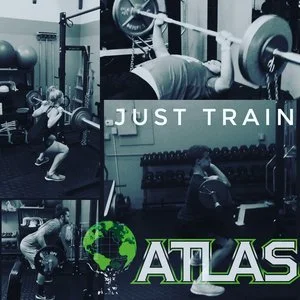Weightlifting at a Young Age: Pros, Cons, and the Right Approach
The debate about weightlifting at a young age is ongoing. Is it beneficial or harmful? In this blog post, we'll discuss the pros and cons of lifting weights as a young individual, explore the right age to start, and provide guidance on how Atlas Performance Training can support young athletes in their fitness journey.
Young individuals and parents often grapple with the decision of when to introduce weightlifting. Concerns about stunted growth, injury, or inadequate supervision can make this decision challenging.
The Right Age for Weightlifting
The appropriate age for a child to begin a weightlifting program is generally around 7-8 years old. However, it's crucial to note that this age can vary based on individual factors, including physical maturity, emotional readiness, and proper supervision. Children should only engage in weightlifting under the guidance of qualified coaches who specialize in youth training.
Benefits of Weight Training for Young Individuals
Improved Physical Strength: Weightlifting can enhance muscular strength and endurance, helping children excel in various physical activities and sports.
Enhanced Bone Density: Weight-bearing exercises, such as weightlifting, stimulate bone growth and increase bone density, reducing the risk of osteoporosis later in life.
Increased Metabolism: Strength training boosts metabolism, helping young individuals maintain a healthy body weight and body composition.
Better Motor Skills: Weightlifting improves coordination, balance, and overall motor skills, which can benefit children in their daily activities and sports.
Enhanced Confidence and Mental Resilience: Achieving physical goals in weightlifting can boost self-esteem and teach children the value of hard work and discipline.
Essential Elements of a Youth Weightlifting Program
Proper Supervision: Children should always train under the supervision of experienced and certified youth coaches who understand the unique needs and limitations of young athletes.
Appropriate Technique: Form and technique should be the primary focus. Children should learn proper lifting mechanics to prevent injury.
Progressive Overload: Training should be progressive, gradually increasing the resistance to match the child's growth and strength development.
Individualization: Programs should be tailored to the child's age, physical maturity, and goals. Not all children will progress at the same rate.
Rest and Recovery: Adequate rest between training sessions is essential to prevent overtraining and promote recovery.
Long-Term Effects of Youth Weightlifting
Participating in a structured youth weightlifting program can have several positive long-term effects:
Lifelong Fitness: Children who learn the importance of exercise at a young age are more likely to maintain an active lifestyle throughout their lives.
Injury Prevention: Proper weightlifting technique can help prevent injuries in other sports and physical activities.
Healthy Body Composition: Weightlifting contributes to maintaining a healthy body composition, reducing the risk of obesity and related health issues.
Mental Discipline: The mental discipline learned through weightlifting can be applied to various aspects of life, from academics to personal goals.
Life Skills: Weightlifting fosters teamwork, discipline, time management, and goal-setting skills that are valuable throughout adulthood.
In conclusion, the right age for a child to begin a weightlifting program is typically around 7-8 years old, but this should be determined on an individual basis with proper supervision. The benefits of weight training for young individuals include improved physical strength, enhanced bone density, increased metabolism, better motor skills, and increased confidence. To ensure the best results and long-term benefits, a youth weightlifting program should focus on proper supervision, technique, progressive overload, individualization, and rest. Ultimately, participation in a well-structured weightlifting program can set children on a path to a lifetime of health and fitness.
Atlas Performance Training Trainers believe in a balanced approach to youth fitness. While weightlifting can offer several benefits, it must be done with proper guidance and consideration of individual maturity levels.
Our trainers are experienced in working with young athletes, emphasizing safety, technique, and gradual progression. We create customized programs that align with a young individual's development stage, ensuring they experience the positive aspects of weightlifting without risking injury or growth issues.
By following our guidance and adhering to age-appropriate training plans, young athletes can safely reap the rewards of weightlifting while minimizing potential drawbacks.
Incorporating these five informative and comprehensive blog posts with graphics and videos will not only educate your audience but also showcase Atlas Performance Training'’ expertise and commitment to helping individuals achieve their fitness goals while prioritizing their health and well-being.

